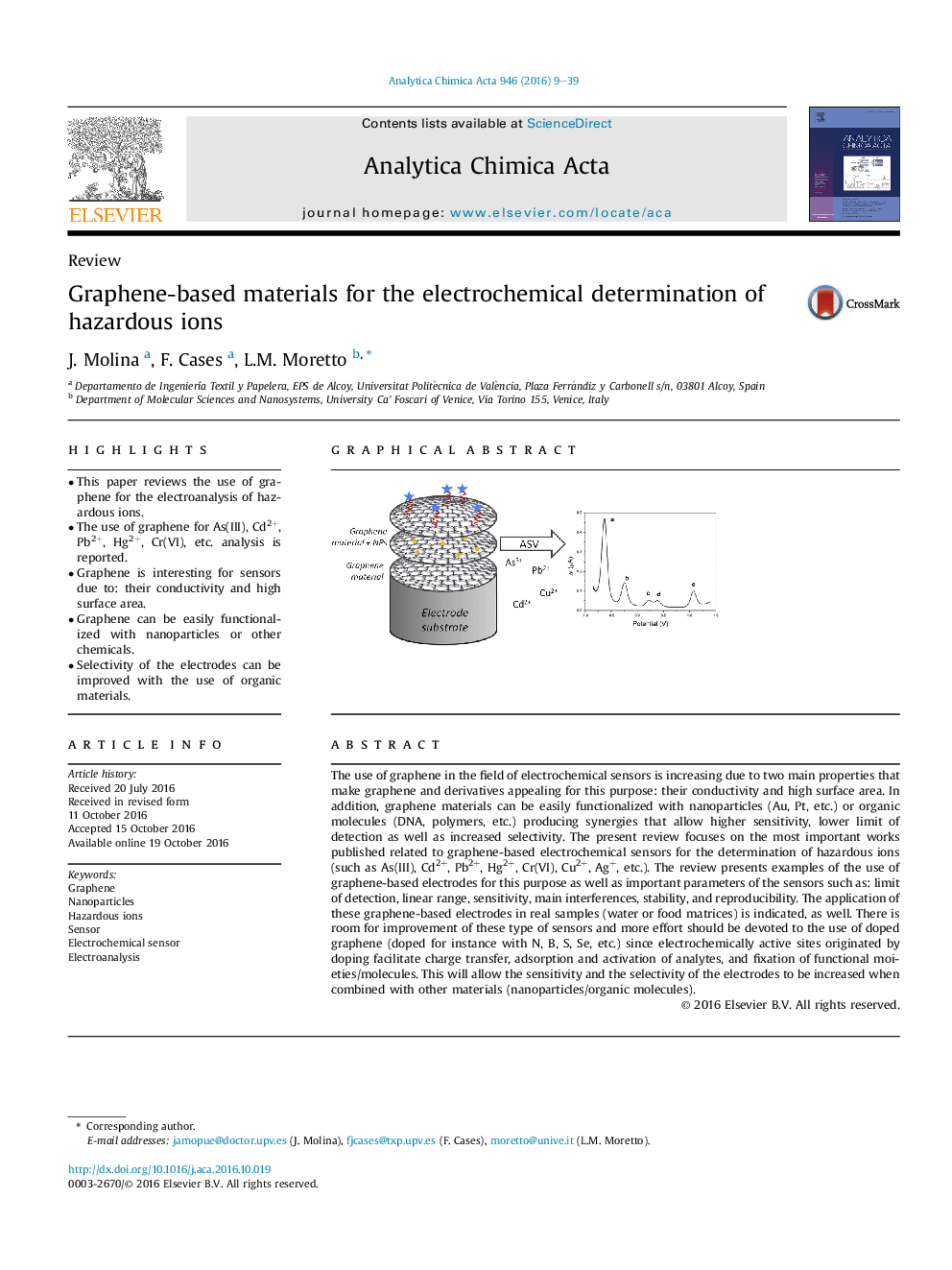| کد مقاله | کد نشریه | سال انتشار | مقاله انگلیسی | نسخه تمام متن |
|---|---|---|---|---|
| 5131330 | 1490886 | 2016 | 31 صفحه PDF | دانلود رایگان |
- This paper reviews the use of graphene for the electroanalysis of hazardous ions.
- The use of graphene for As(III), Cd2+, Pb2+, Hg2+, Cr(VI), etc. analysis is reported.
- Graphene is interesting for sensors due to: their conductivity and high surface area.
- Graphene can be easily functionalized with nanoparticles or other chemicals.
- Selectivity of the electrodes can be improved with the use of organic materials.
The use of graphene in the field of electrochemical sensors is increasing due to two main properties that make graphene and derivatives appealing for this purpose: their conductivity and high surface area. In addition, graphene materials can be easily functionalized with nanoparticles (Au, Pt, etc.) or organic molecules (DNA, polymers, etc.) producing synergies that allow higher sensitivity, lower limit of detection as well as increased selectivity. The present review focuses on the most important works published related to graphene-based electrochemical sensors for the determination of hazardous ions (such as As(III), Cd2+, Pb2+, Hg2+, Cr(VI), Cu2+, Ag+, etc.). The review presents examples of the use of graphene-based electrodes for this purpose as well as important parameters of the sensors such as: limit of detection, linear range, sensitivity, main interferences, stability, and reproducibility. The application of these graphene-based electrodes in real samples (water or food matrices) is indicated, as well. There is room for improvement of these type of sensors and more effort should be devoted to the use of doped graphene (doped for instance with N, B, S, Se, etc.) since electrochemically active sites originated by doping facilitate charge transfer, adsorption and activation of analytes, and fixation of functional moieties/molecules. This will allow the sensitivity and the selectivity of the electrodes to be increased when combined with other materials (nanoparticles/organic molecules).
235
Journal: Analytica Chimica Acta - Volume 946, 23 November 2016, Pages 9-39
